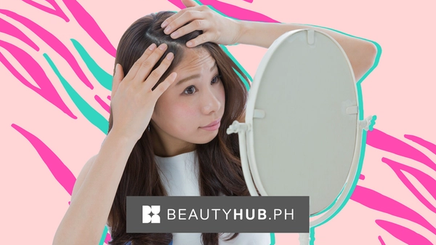
Dandruff treatment is not as simple as getting rid of itching and flakes. Figuring out the cause of dandruff is essential to finding the best treatment. These causes include seborrheic dermatitis, an overgrowth of yeast that causes increased skin cell production, and even other conditions such as eczema.
If you’ve been using an anti-dandruff shampoo that doesn’t seem to be working, don’t blame the product just yet — there could be other factors at play. Here are six more reasons your dandruff treatment isn’t working and what you can do about them.
It Might Not Be Dandruff
Dandruff is not the only condition that causes flaking. Some flakes can result from dry scalp or contact dermatitis. Dandruff is a specific skin condition that's worsened by the opposite: too much oil on the scalp. A microbe called Malassezia globosa, which is on everyone’s scalp, feeds on the excess sebum then breaks it down into byproducts that can speed up cell renewal. The dead skin builds up on the scalp and eventually sheds. If you use to treat dry scalp, you could end up with more irritation and flakes.
Your Treatment Is Too Oily
Oil is a go-to remedy for many hair problems. Coconut oil and olive oil are applied directly to the scalp to get rid of flakes. While it may be satisfying to see the flakes come off easily (in the same way it’s satisfying to extract a blackhead or peel off false eyelashes), they can have potential side effects. Since dandruff is the result of too much oil in the scalp, adding more oil can potentially irritate your skin or make matters worse.
Try a ceramide-rich product like Dove Ceramide Intense Repair Shampoo to nourish your hair and scalp minus the heavy oils.
You Don’t Shampoo Often Enough
Because of the myth that causes dandruff, some people try to address it by shampooing less. This, of course, backfires because, with dandruff, you need to get rid of excess sebum from your scalp. One reason your dandruff treatment may not be working is because you're not maintaining .
Using dandruff shampoo along with a good is one of the most effective ways to do this. Try CLEAR Complete Soft Care Anti-Dandruff Shampoo which has amino acids that get rid of dandruff while nourishing the scalp. You also need to give the dandruff treatment enough time to work.
You’re Allergic to Your Product
On the other hand, you might also want to check the products that you are using. If you started using something new and you suspect that it might be giving you a flaky scalp, you could also have contact dermatitis. According to the American Academy of Dermatology, it is possible to have one condition at a time. If your dandruff and itching are not going away, try decreasing the number of products in your routine.
You’re Under a Lot of Stress
According to the UK National Health Service, . If your condition is adding to your worries, maintaining a relaxing hair care routine might help. The American Psychological Association states that self-care in any form can help alleviate stress. Whether that’s religiously practicing a beauty routine, meditating, or talking to your friends, make a habit of it to reduce stress and maybe get rid of your dandruff, too.
You’re Eating a Lot of Junk Food
Certain vitamin deficiencies can cause dandruff. Even if you're using the best dandruff treatment, without a balanced diet, you could still be prone to inflammation. According to a study in the National Institutes of Health, low blood levels of zinc, niacin (Vitamin B3), riboflavin (Vitamin B2), and pyridoxine (Vitamin B6) may cause or worsen dandruff. Eating lots of whole grains, meat, fish, shellfish, eggs, green vegetables, and organ meats may help improve your scalp’s condition.
Your topical dandruff treatment is just one way to combat dandruff. Try addressing the issues above to see if they’re keeping you from being dandruff-free. If you experience pain, bleeding, or intolerable itching on your scalp, visit your doctor immediately.
Interested in more dandruff treatments? Check this out: .